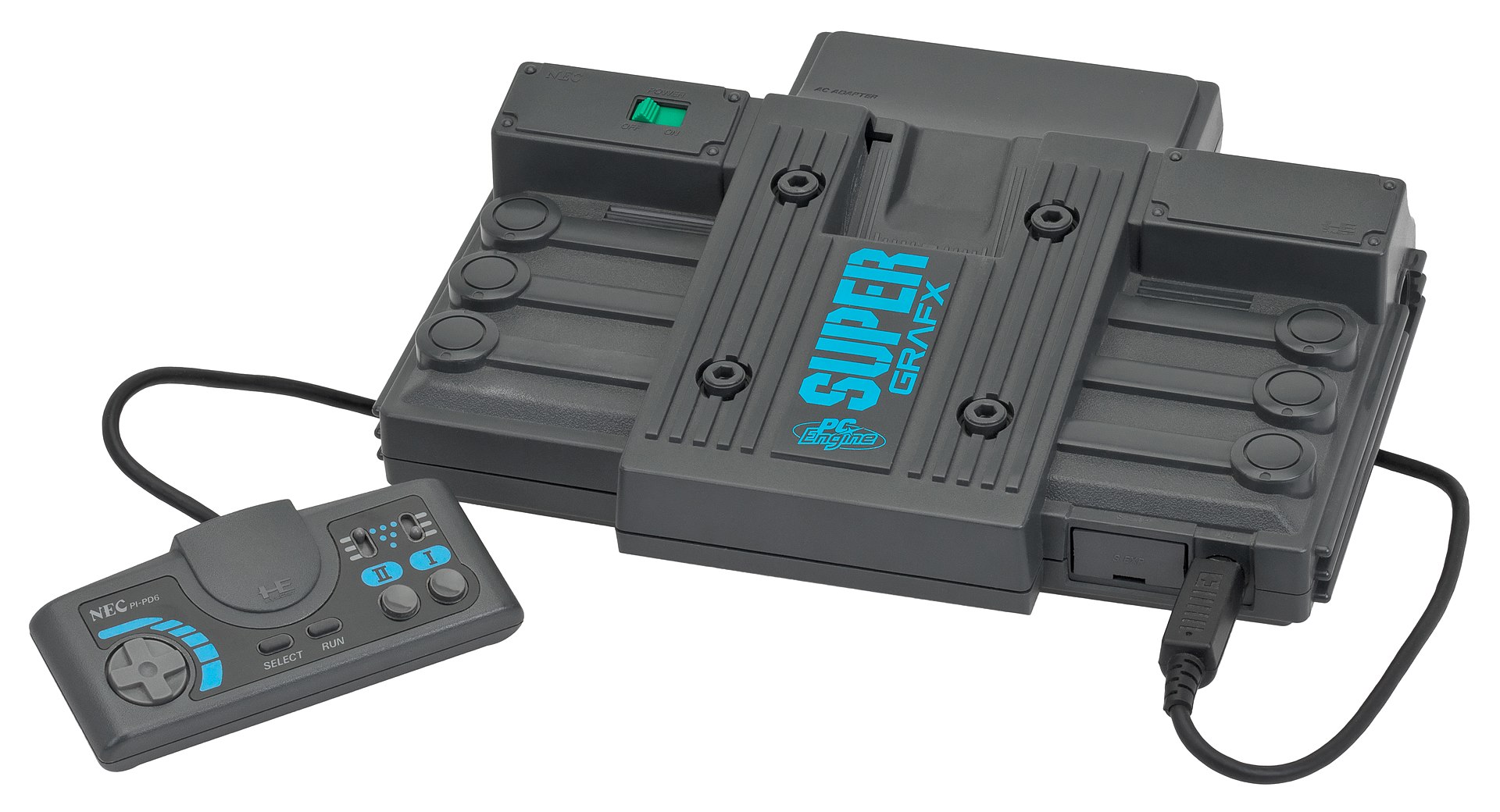-
1989 December 08
Hardware Description
The PC Engine SuperGrafx (PCエンジンスーパーグラフィックス, Pī Shī Enjin SūpāGurafikkusu), also known as simply the SuperGrafx, is a fourth-generation home video game console manufactured by NEC Home Electronics and released in Japan and France in 1989. It is the successor system to the PC Engine, released two years prior. Originally known as the PC Engine 2 during production stages, it was purported as a true 16-bit home console, featuring improved graphics and audio capabilities over its predecessor.
The console was rushed to market, released several months before its initial release date of 1990, only having modest updates to the hardware. With only six retail games released that took advantage of the console's hardware updates, the SuperGrafx was a commercial failure, selling only 75,000 units total in both regions. None of the hardware advancements it possessed were carried over to NEC's later consoles, such as the TurboDuo.
Compared to the PC Engine, the SuperGrafx has four times the amount of working RAM for the main CPU and a second video chip with its own video RAM. Also included is a priority controller chip, which allows the output of both video chips to be combined in various ways. The SuperGrafx has support for two independently scrolling background layers, like the Mega Drive, as opposed to the PC Engine's single layer.
It is a very common misconception that the extra video hardware capabilities were taxing on the system's CPU, and is often cited as the main reason few games were developed for the system. In reality, despite having the same CPU as the PC Engine, the SuperGrafx is more than capable of keeping up with the new graphics enhancements, as the majority of the workload is handled by the VDPs.
One accessory of note was the "Power Console", designed to add a full flight yoke, throttle and keypad to the SuperGrafx, sliding over the entire console. Besides a prototype, no Power Consoles were ever produced.
Since the SuperGrafx was produced and marketed as an upgraded PC Engine model rather than as a new platform, it was backwards compatible with standard PC Engine HuCards in addition to its own. However, SuperGrafx-specific HuCards were expensive compared to standard HuCards, in some cases approaching as much as $110 USD at retail.
The SuperGrafx is also compatible with the CD-ROM² System add-on (via the ROM² Adaptor), as well as the Super CD-ROM² add-on. No CD-ROM² format games were produced that took advantage of the SuperGrafx's added capabilities.
-
Manufacturer:
-
Hardware Type:
Video Game -
Manufacture Year:
1989 December 08 -
More Info:
-
We recognize our sponsors starting at $1 per entry.
Learn more at https://www.ithistory.org/benefits

